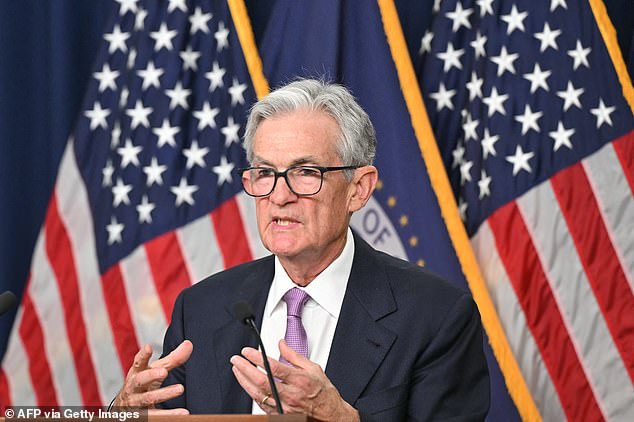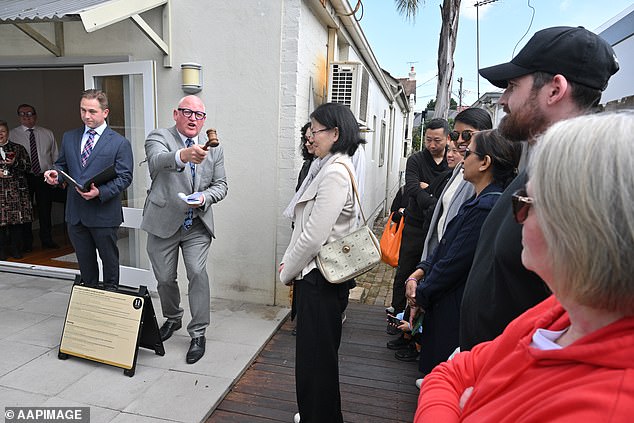Reserve Bank of Australia governor Michele Bullock lands a huge pay rise to earn $1.262million – more than TWICE what her US counterpart does
Australia’s most powerful banker is paid $100,000 more than her male predecessor and at least double what her counterpart in the United States is paid.
Michele Bullock received $1.262 million last financial year as the first woman to lead the Reserve Bank of Australia.
This was $114,750 more than the total compensation package of $1.147 million for her predecessor Philip Lowe, covering a base salary with benefits.
She is among the highest-paid central bankers in the world and has a base salary that is more than double that of her counterpart at the US Federal Reserve.
The woman responsible for setting interest rate policy has been given a pay rise equivalent to an average Australian full-time salary, as borrowers continue to grapple with a cost-of-living crisis.
It is because mortgage holders are now paying an average of 69 percent more monthly repayments than at the beginning of 2022.
The Reserve Bank’s annual report for 2023-2024 showed Ms Bullock received $1.057 million as governor after taking over in September 2023.
During her three months as deputy governor during the last fiscal year, she received another $205,380.
The total came to $1.262 million, but is likely to be much higher in 2024-2025 – her first full financial year as RBA governor.
Australia’s most powerful banker is paid $100,000 more than her male predecessor, new figures reveal (Michele Bullock is pictured right with former RBA governor Philip Lowe)
Her base salary of $811,108 is a third higher than Prime Minister Anthony Albanese’s salary of $607,516 as prime minister before pension and benefits.
This was also more than double US Federal Reserve Chairman Jerome Powell’s $291,500 base salary, which was set by Congress and not an independent Remuneration Tribunal like Australia.
Her total compensation of $1.262 million is also significantly higher than her Bank of England counterpart, Andrew Bailey $A979,643 – converted from £498,952.
Ms Bullock’s salary is also almost double that of the man who appointed her: Treasurer Jim Chalmers at $438,113 and more than triple the base salary of a backstabber MP at $233,660.
Treasury Secretary Steven Kennedy received total compensation of $959,257 in 2023-2024, including a base salary of $816,296.
Neither Ms Bullock nor Dr Kennedy receive bonuses, but the RBA governor has accrued far more long service leave after joining the Reserve Bank in 1985.

Her base salary of $811,108 was more than double the $203,500 base salary of US Federal Reserve Chairman Jerome Powell (worth $A308,493), which is set by Congress rather than an independent Remuneration Tribunal like Australia.
But unlike Labor cabinet ministers – who could lose their jobs at the next election – Ms Bullock was appointed last year for a seven-year term.
Inflation remains higher in Australia than in many other advanced economies and the Reserve Bank will hold a two-day meeting on Monday and Tuesday next week.
The 30-day interbank futures market sees a rate cut next month as only a 10 percent chance, with Bullock having ruled out any relief before Christmas in recent weeks.
This is despite the fact that the US, UK, Canada, European Union and New Zealand have already cut interest rates this year.
Inflation data for the September quarter is due to be released on Wednesday, with the Commonwealth Bank predicting a low figure, bringing forward a rate cut to December.
Headline inflation is forecast to fall to 2.9 percent, down from the annual level of 3.8 percent in the June quarter.
This figure includes volatile items like falling gasoline prices and the federal government’s one-time $300 electricity rebates.

The woman responsible for setting interest rate policy has received a pay rise equivalent to an average Australian full-time salary (pictured from an auction in Sydney)
But underlying inflation, excluding volatile items, would still be above the RBA’s target of 2 to 3 percent.
The Commonwealth Bank, Australia’s largest home lender, expects the trimmed average inflation rate to fall from 3.9 percent to 3.4 percent.
“If our forecast for underlying inflation comes to fruition, we expect the narrative around inflation being both too high and ‘sticky’ in Australia to diminish,” the report said.
